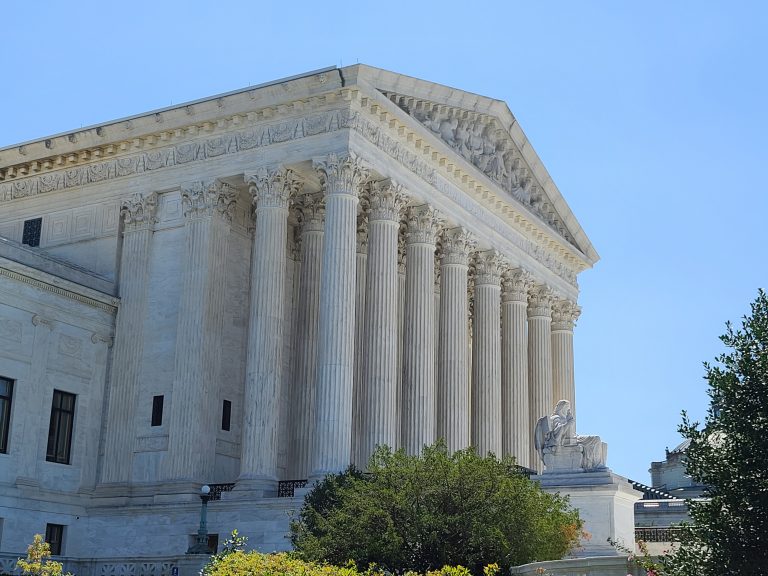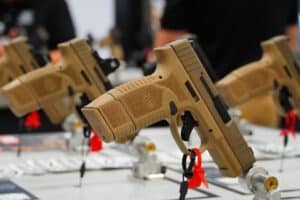A federal judge upheld Delaware’s “assault weapons” ban this week using reasoning likely to resonate with other courts inclined to reach the same outcome.
On Monday, Federal District Judge Richard G. Andrews, an Obama appointee, found the state’s ban on AR-15s, AK-47s, and similar firearms–along with its ban on magazines that hold more than 17 rounds–is constitutional. He did so despite finding the guns were “in common” use for lawful purposes.
“[I] conclude that the prohibited LCMs, like the prohibited assault long guns, are in common use for self-defense and therefore ‘presumptively protect[ed]’ by the Second Amendment,” Judge Andrews ruled in Delaware State Sportsmen’s Association v. Delaware Department of Safety and Homeland Security.
That probably left a lot of people doing a double-take. But Judge Andrews came to his conclusion after arguing AR-15s and the like weren’t common during the founding era and represented a technological advancement that is responsible for a uniquely modern problem: mass shootings. Because of this, he argued Bruen allowed him to look for historical analogues that show a history of regulation instituted for the same purpose and using the same means.
He ruled there was such a tradition.
“I find that the LCM and assault long gun prohibitions of HB 450 and SS 1 for SB 6 are consistent with the Nation’s historical tradition of firearm regulation,” he wrote. “Plaintiffs have therefore failed to demonstrate a likelihood of success on the merits of their Second Amendment claim.”
He pointed to the proliferation of late 19th Century Bowie knife and Billy club bans, plus later machinegun bans, as evidence governments have previously banned the sale of weapons they believe are associated with especially dangerous criminal behavior. He further argued banning a subset of weapons was a relatively minor burden and one that was similar to his historical examples.
“[B]oth sets of regulations impose a ‘comparable burden,” he wrote. “Indeed, the burden that the challenged regulations impose is slight.”
Judge Andrews isn’t the only, or even the first, one to use this concept to save a ban. District Judge Karin Immergut, a Trump appointee, denied an attempt to block Oregon’s magazine limit under the same basic framework. While she went further and said she didn’t need to do a Bruen analysis at all because ammunition magazines aren’t protected by the plain text of the Second Amendment, she did the analysis anyway, and it came out along the same lines as Judge Andrews’ argument.
It’s likely other courts will adopt this framework as well.
Other courts, namely the Ninth and Fourth Circuits, have previously shown they don’t believe AR-15s or similar guns should be sold to civilians. The old two-step balancing test of the pre-Bruen era was explicitly about whether the argued public safety impact of banning the guns was enough to overcome the infringement on the right of Americans to have them. Any court that upheld an “assault weapons” ban before 2022 essentially said “yes.”
So, given the opportunity to review the law again, it’s fair to think they may want to find a way to reach the same conclusion. That’s especially true if the path to that answer appears to at least plausibly fit within the Supreme Court’s new test.
Of course, Judge Andrews’ reasoning has some serious flaws. For one, it seems to be making the same mistake in the eyes of the Court that the two-step test did: going one step too far.
Reading Heller, McDonald, and Bruen provides the impression that any class of firearms considered to be in “common use” for lawful purposes, such as self-defense, is inherently protected by the Second Amendment and can’t be banned by the government.
“The traditional militia was formed from a pool of men bringing arms ‘in common use at the time’ for lawful purposes like self-defense,” The Court wrote in Heller. “Indeed, that is precisely the way in which the Second Amendment’s operative clause furthers the purpose announced in its preface. We therefore read Miller to say only that the Second Amendment does not protect those weapons not typically possessed by law-abiding citizens for lawful purposes, such as short-barreled shotguns. That accords with the historical understanding of the scope of the right[…].”
That Judge Andrews finds AR-15s and the other banned guns in common use for the purpose of self-defense and then proceeds on to further analysis is unlikely to be what The Court had in mind. It seems relatively clear SCOTUS doesn’t believe it is possible to ban any gun that is in common use for lawful purposes. So, the detour into comparing modern “assault weapons” bans to 19th Century Bowie knife or Billy club bans will likely be unpersuasive should it ever make its way up to The High Court.
It also suffers from the lack of a limiting principle. Judge Andrews argues that the self-loading, semi-automatic technology found in AR-15s and the other banned guns didn’t become popular until after the Civil War. And their adoption led to the rise of mass shootings (never mind that semi-automatics were becoming common about 100 years before the onset of modern mass shootings).
But there’s nothing in Judge Andrews’ line of reasoning that wouldn’t prevent the same argument from being applied to all semi-automatic firearms or an ammunition magazine of essentially any size. That includes semi-automatic handguns, which the Supreme Court has already ruled can’t be banned.
Still, even if the prospects for success on appeal to the Supreme Court are dim for this argument upholding AR bans, it will likely proliferate in some of the most important circuits because it at least attempts to follow the Bruen steps while still maintaining the bans. And, even if the weaknesses are as serious as they appear, pointing them out will only matter if the Supreme Court actually takes up a case involving them. After all, the two-step test The Court excoriated in Bruen was the defacto review standard on gun cases for a decade because of SCOTUS inaction.
Whatever ends up happening, expect to see Judge Andrews’ legal reasoning pop up anytime a gun or magazine ban is upheld.







4 Responses
“AR-15s and the like weren’t common during the founding era and represented a technological advancement that is responsible for a uniquely modern problem: mass shootings.”
There’s a fundamental logic error here. This judge can not possibly know, or assert as fact, that modern weapons are responsible for mass shootings. It’s simply a doctrine of the anti.
Yes, I agree this is a major problem with the logic used here. Mass shootings didn’t begin to proliferate until the 1980s, according to data from The Violence Project. There really isn’t a significant technological advancement in firearms that came about during that time to cause the problem. So, I think the analysis is a pretty big stretch in order to try and keep things within what Bruen allows.
David Kopel has compiled a very detailed history of laws regarding Bowie knives at:
https://reason.com/volokh/2022/11/20/bowie-knife-statutes-1837-1899/
It’s a very long article and I would recommend skipping down to its conclusion rather than slugging through all the twists and turns of the regulatory history.
If this judicial approach of liberal courts is successful in some of the district/circuit courts, I have great doubt it will survive muster with SCOTUS.
Steve, as a relatively new subscriber to The Reload, I appreciate what you do for the 2A community.
Hey, Jerry. That’s a great resource. I’m also pretty skeptical of the way some states are citing these historical laws. I’ve seen several states try to claim the statute of South Hampton and it’s descendents was a carry ban when it was really about banning going armed “to the terror of the people,” which is quite different. It’s more of a highwayman ban than a general carry ban.
Thanks for the link and the feedback! I appreciate it.